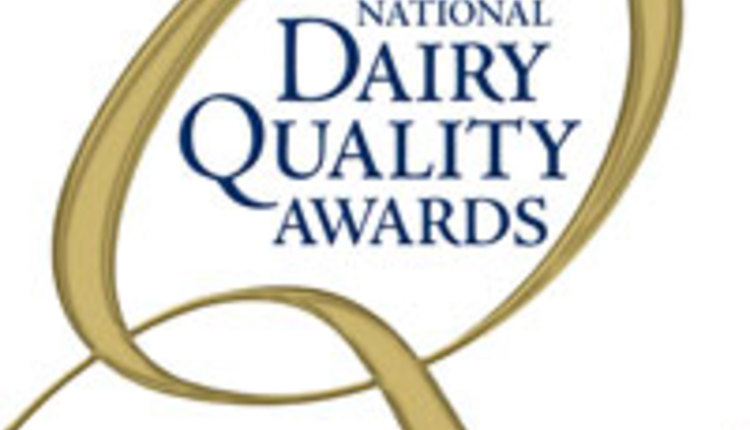
Milk prices were a record high in 2014 with Class III averaging $22.34 and Class IV averaging $22.09. For the past four years milk prices have averaged well below this record. This year, despite a lower growth in milk production, up just 0.7% in October and 0.6% in November, the Class III price has fallen each month since the peak of $16.09 in September. December Class III is estimated to be around $13.85 making the average for the year around $14.60, the lowest average of the past four years. This will make the average over the past four years of only about $15.35. Class IV started the year well below $14.00 but improved since ending the year near $15 and averaging about $14.20 for the year, the second lowest average for the past four years with 2016 being the lowest at $13.17. Over the past four years Class IV will average about $14.25.
This decline in milk prices towards the end of the year was not expected. Strong holiday sales of butter and cheese normally push prices higher. Sales this year appear to be up but only modestly. Fluid (beverage) milk sales continued to decline being 2.2% lower January through October of this year. December CME butter and cheese prices will average lower than November. Butter currently at $2.18 per pound could average about $0.04 lower. Barrel cheese currently at $1.3150 per pound could average about two cents lower and 40 pound blocks currently at $1.41 per pound could average about four cents lower. But, the price of nonfat dry milk currently at $0.9350 per pound and dry whey currently at $0.4725 per pound could average could average two cents and one cent respectively higher than November.
U.S. dairy exports which have been running above year ago levels all year were virtually flat in October, undermined by a continued loss of sales to China since implementation of retaliatory tariffs. According to the U.S. Dairy Export Council combined shipments of milk powder, whey, lactose, cheese and butterfat to China were down 47% in October from a year ago. Exports elsewhere were up 14% with large gains to Southeast Asia and Mexico. October exports of nonfat dry milk/skim milk powder (NDM/SMP) were up 37% to Mexico and 39% to Southeast Asia making total NDM/SMP exports 19% higher than a year ago. U.S. exported 82% of its October NDM/SMP production, the main factor for strengthening NDM prices. October whey exports were down 19% from a year ago due mostly to China, the largest market being down 51%. The loss of whey exports is a major factor in reducing the price of dry whey from $0.575 per pound mid-October to an average of around $0.43 for November and December and reducing the Class III price nearly $0.90. Despite the retaliatory tariffs placed by Mexico on U.S. cheese October exports of cheese to Mexico were 31% higher than a year ago offsetting losses to China, Japan and Australia keeping total cheese exports the same as a year ago. October butterfat exports remained strong being 75% higher than a year ago. In total October exports were equivalent to 15.3% of U.S. milk production on a total milk solids basis making year-to-date equal to 16.3% of milk production.
Relatively high stock levels are also responsible for lower dairy product prices and milk prices. October 31st butter stocks were 5.9% higher than a year ago, but just 1.1% higher than two years ago. American cheese stocks were 9.9% higher than a year ago and 10.6% higher than two years ago. Total cheese stocks were 8.2% higher than a year ago and 12.3% higher than two years ago. While dry whey stocks were 21.1% lower than a year ago they were 21.7% higher than two years ago. Nonfat dry milk stocks were also 20.2% lower than a year ago, but 12.2% higher than two years ago.
Milk prices for 2019 hinge heavily upon the level of milk production and dairy exports.
Forecasted milk production, domestic sales and dairy exports point to improved milk prices in 2019, but how much improvement? The current slowdown in milk production is encouraging. Milk cows have been declining since June with November numbers down 38,000 head from last year. Cow numbers are likely to continue to decline into 2019. The increase in milk per cow has slowed to 1.0%. Milk production continues relatively strong in some Western states with November production compared to a year ago up 2.9% in California, 4.0% in Idaho, 5.2% in Texas, 7.1% in Colorado, and 5.2% in Kansas, But, in the Northeast milk production was down 0.3% in New York, 4.1% in Pennsylvania and 1.1% in Michigan. The story was the same in the Midwest with Iowa up just 0.2%, Minnesota down 0.3% and Wisconsin up just 0.1%. There were declines of 1.5% in Arizona, 2.9% in New Mexico and 4.8% in Florida. Milk production continues to run relatively strong in South Dakota being up 5.2%.
USDA’s December forecast has milk production for 2019 increasing 1.3% from 20,000 fewer milk cows producing 1.5% more milk per cow. This level of increased milk production normally would be positive for milk prices. But, milk production could even turn out lower. Milk cow numbers could fall by more than this. A wet spring and fall reduced silage/forage quality particularly in the Northeast and Midwest which could reduce the increase in milk per cow. It looks like growth in the economy may slow some in 2019, but still be conducive to increased butter and cheese sale. But, dairy exports is a major factor that will determine how much milk prices will improve. An anticipated slower growth in world milk production is positive for exports. But, unless the trade dispute with China and Mexico ends dairy exports will likely fall below 2018 and dampen the improvement in milk prices. Some are forecasting a Class III below $15 first quarter of the year, in the low $15’s second quarter, the mid-$15’s second quarter and low $16’s fourth quarter for average of no more than $1 higher than the forecasted $14.60 average for 2018. But, it is not without the possibility that prices could better than this with Class reaching the high $16’s or low $17’s by fourth quarter. Let’s hope so because dairy producers need more than just a $1 improvement.
Robert Cropp
racropp@wisc.edu
University of Wisconsin-Madison

